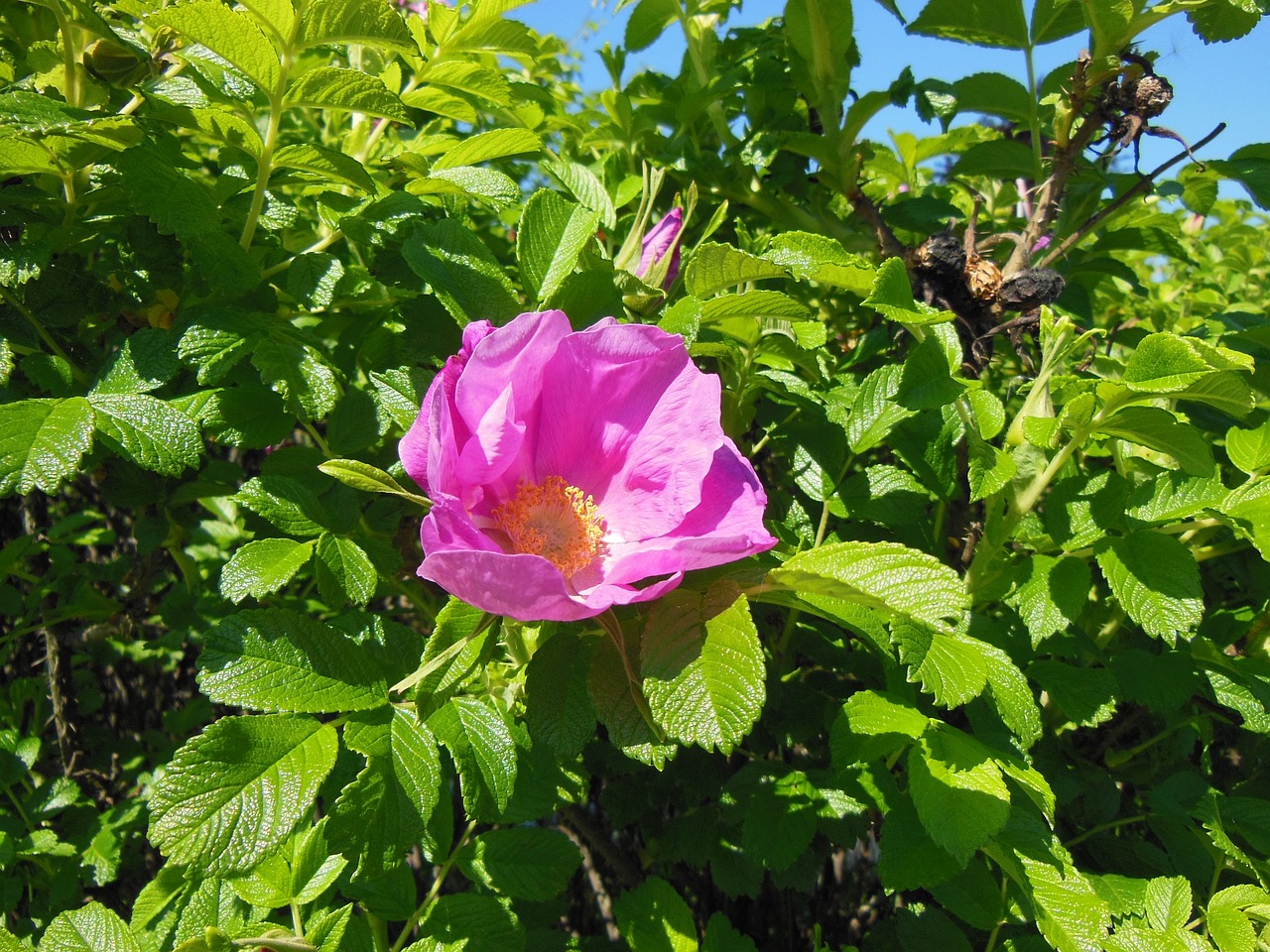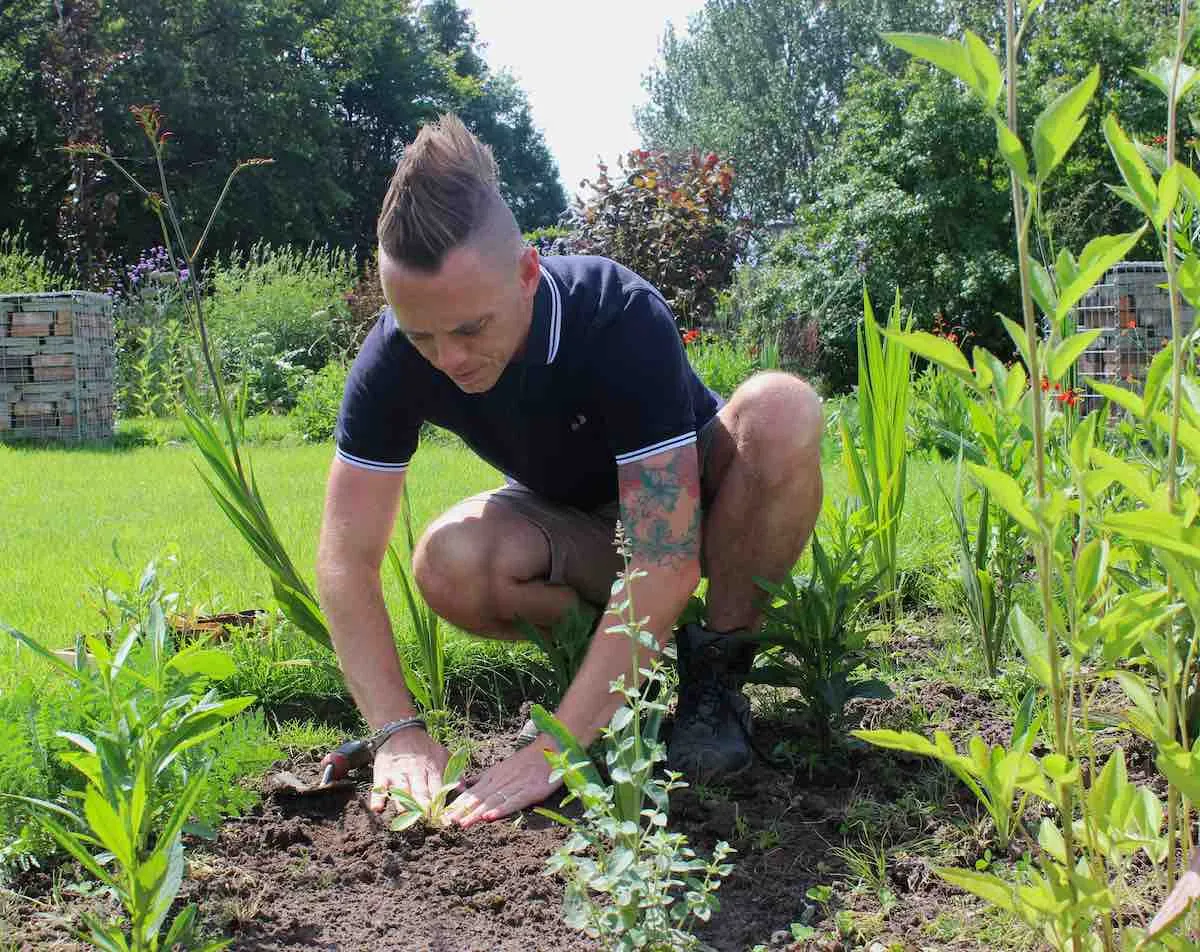Hi @helenm
Thanks for your question and well done on choosing a native hedge species such as dogrose for your front garden hedge. This is a plant that acts as a wildlife magnet, not to mention a great capture of pollution!
I'd firstly ask, why you're not simply hard pruning it back into a manageable shape? Not teaching you to suck eggs but Dogroses are so tough you couldn't literally cut it down in half and neaten it up and it will be fine. If you didn't know that they I'd try tan first for a year and see how you like it before digging them up.

As an ethical eco-friendly gardener, this would be my suggestion rather than introducing inert gabion baskets that, may I say, could look a bit sterile and or brutalist in a front garden?
If you do need to dig up and rehome the roses, then this is my advice!
When to Remove Rose Hedging
Timing is crucial when removing rose hedging to avoid damage to the surrounding plants and soil. The best time to tackle this task is during late winter to early spring (around February to March). This period is ideal because:
Dormancy: The roses will be dormant, so there's less risk of damaging new growth.
Before the growing season: You’ll be ready for new planting once the roses are gone and the soil has a chance to recover.
Avoid removing roses during their active growing season (late spring through summer) as this can stress the plants and in some cases kill them.
How to Remove Rose Hedging
1.Prepare Your Tools
Before you begin, make sure you have sharp pruning shears, loppers, a pruning saw, gardening gloves (roses have thorns!), and a garden fork or spade for digging up the roots.
2.Cut Back the Rose by 50%
Start by cutting back the rose canes to a manageable size. Use pruning shears for smaller stems and loppers or a saw for thicker canes. Cutting the roses back makes the removal process easier and prevents them from becoming too cumbersome.
3.Dig Around the Roots
Once you’ve trimmed the canes, use a garden fork or spade to carefully dig around the root balls of the hedging. Be gentle to avoid damaging the surrounding soil or other plants.
4.Remove the Root Ball
Once you’ve exposed the roots, grab hold of the base and pull gently. If the root system is particularly large, you may need to cut through some of the roots with your pruning saw or loppers.
5.Dispose of the Plant Material
Dispose of the removed rose canes and roots in your green waste or compost pile. Be careful not to compost any diseased material, as it could spread to other plants.
6.Improve the Soil
After removal, you may find the soil has become compacted and depleted by the hungry roses. Use this opportunity to improve the soil by adding compost or organic matter, which will help prepare the space for new plants.
All the best and do let us know how you get on!
Lee Garden Ninja
Hi @helenm
Thanks for your question and well done on choosing a native hedge species such as dogrose for your front garden hedge. This is a plant that acts as a wildlife magnet, not to mention a great capture of pollution!
I'd firstly ask, why you're not simply hard pruning it back into a manageable shape? Not teaching you to suck eggs but Dogroses are so tough you couldn't literally cut it down in half and neaten it up and it will be fine. If you didn't know that they I'd try tan first for a year and see how you like it before digging them up.

As an ethical eco-friendly gardener, this would be my suggestion rather than introducing inert gabion baskets that, may I say, could look a bit sterile and or brutalist in a front garden?
If you do need to dig up and rehome the roses, then this is my advice!
When to Remove Rose Hedging
Timing is crucial when removing rose hedging to avoid damage to the surrounding plants and soil. The best time to tackle this task is during late winter to early spring (around February to March). This period is ideal because:
Dormancy: The roses will be dormant, so there's less risk of damaging new growth.
Before the growing season: You’ll be ready for new planting once the roses are gone and the soil has a chance to recover.
Avoid removing roses during their active growing season (late spring through summer) as this can stress the plants and in some cases kill them.
How to Remove Rose Hedging
1.Prepare Your Tools
Before you begin, make sure you have sharp pruning shears, loppers, a pruning saw, gardening gloves (roses have thorns!), and a garden fork or spade for digging up the roots.
2.Cut Back the Rose by 50%
Start by cutting back the rose canes to a manageable size. Use pruning shears for smaller stems and loppers or a saw for thicker canes. Cutting the roses back makes the removal process easier and prevents them from becoming too cumbersome.
3.Dig Around the Roots
Once you’ve trimmed the canes, use a garden fork or spade to carefully dig around the root balls of the hedging. Be gentle to avoid damaging the surrounding soil or other plants.
4.Remove the Root Ball
Once you’ve exposed the roots, grab hold of the base and pull gently. If the root system is particularly large, you may need to cut through some of the roots with your pruning saw or loppers.
5.Dispose of the Plant Material
Dispose of the removed rose canes and roots in your green waste or compost pile. Be careful not to compost any diseased material, as it could spread to other plants.
6.Improve the Soil
After removal, you may find the soil has become compacted and depleted by the hungry roses. Use this opportunity to improve the soil by adding compost or organic matter, which will help prepare the space for new plants.
All the best and do let us know how you get on!
Lee Garden Ninja
 Lee Burkhill: Award Winning Designer & BBC 1's Garden Rescue Presenters Official Blog
Lee Burkhill: Award Winning Designer & BBC 1's Garden Rescue Presenters Official Blog



